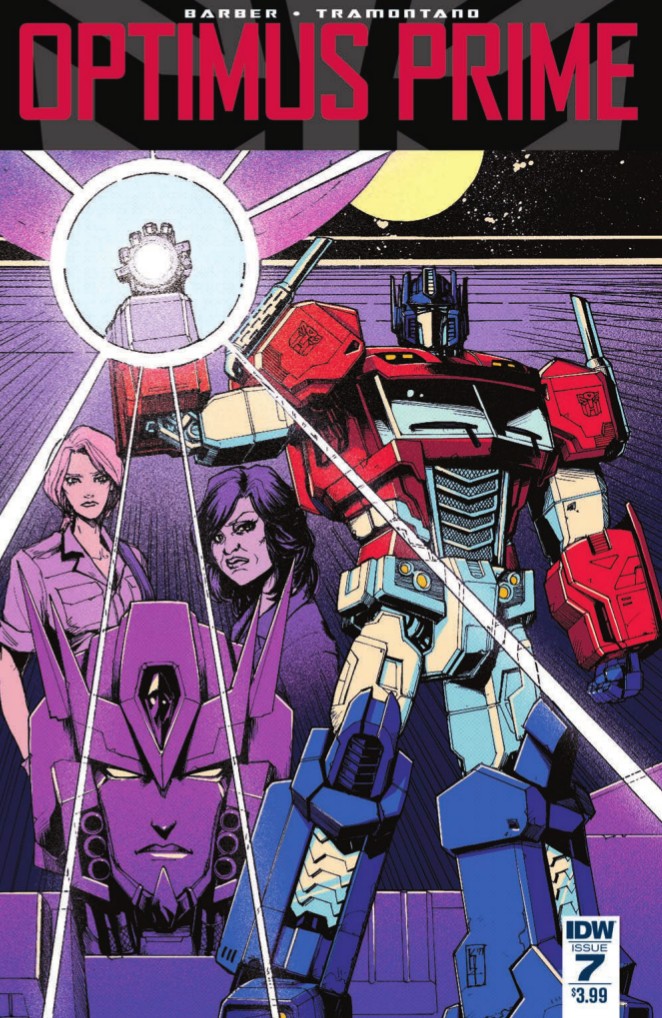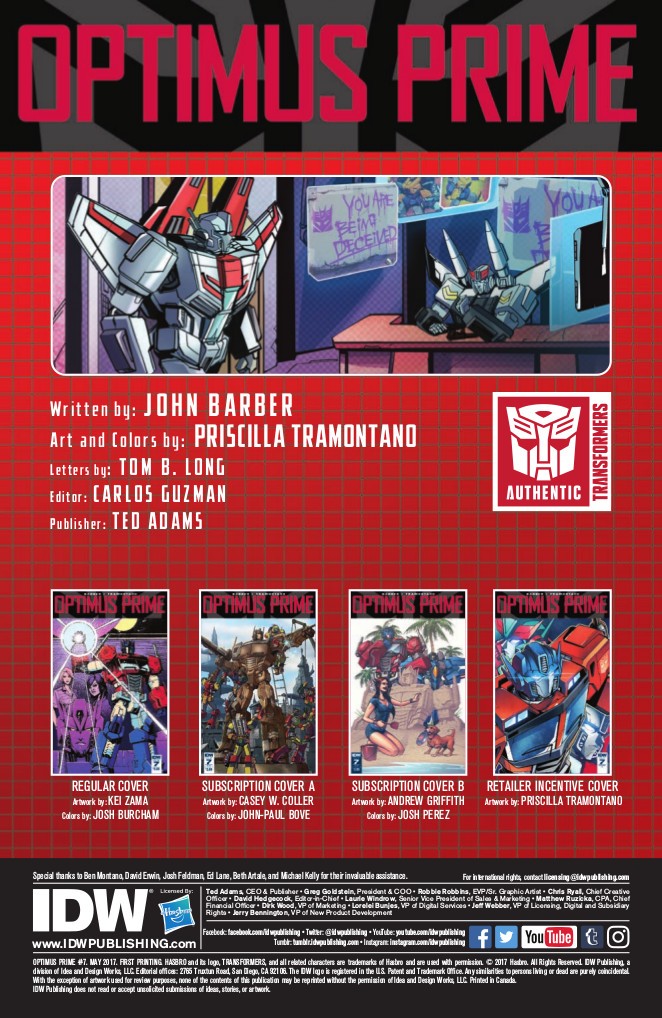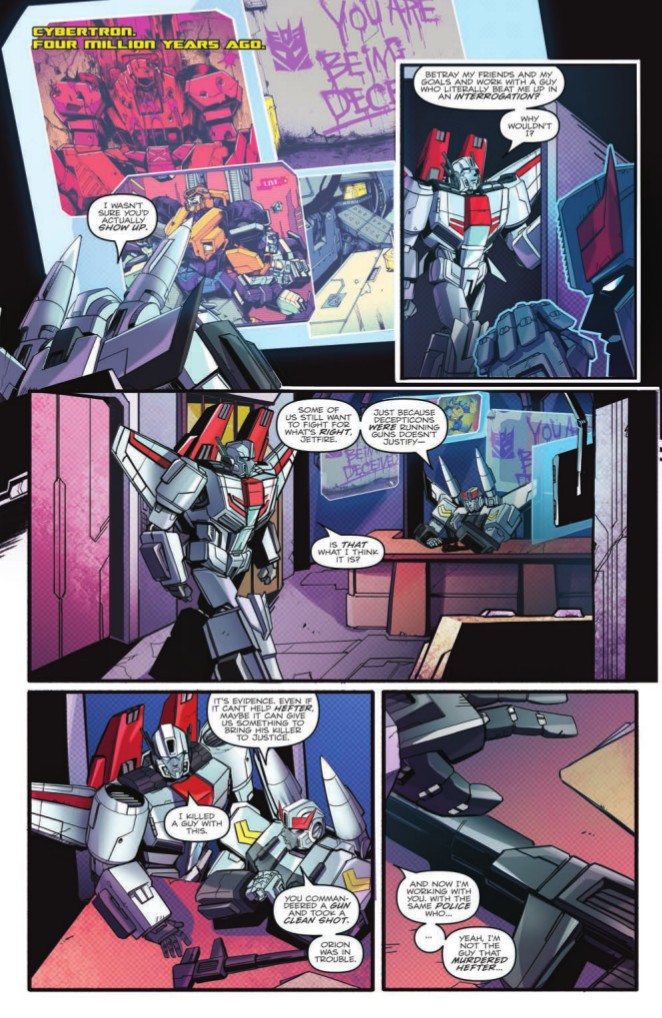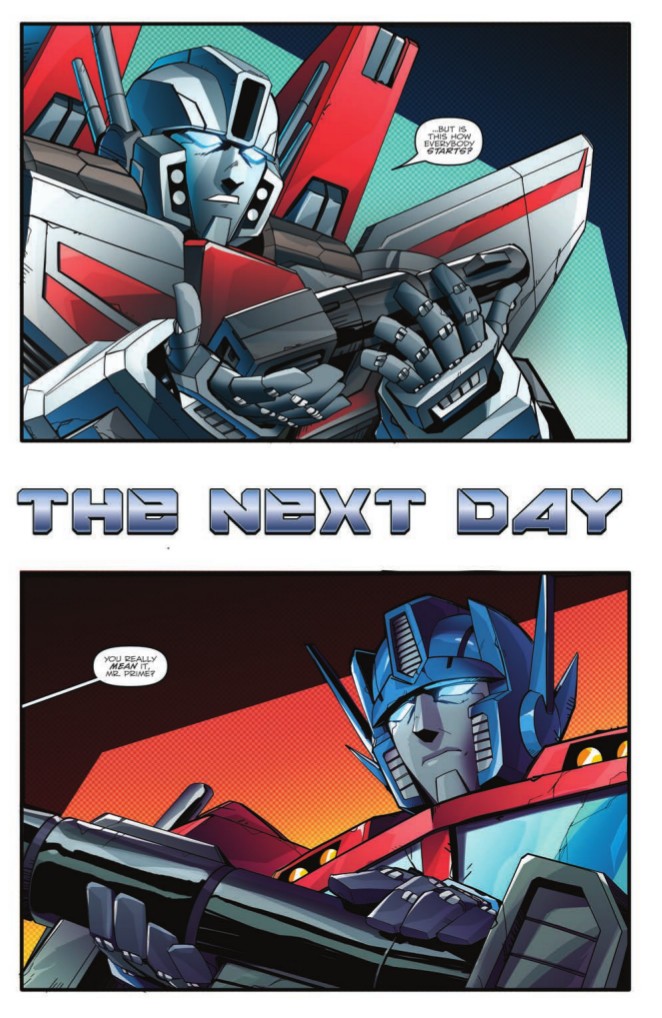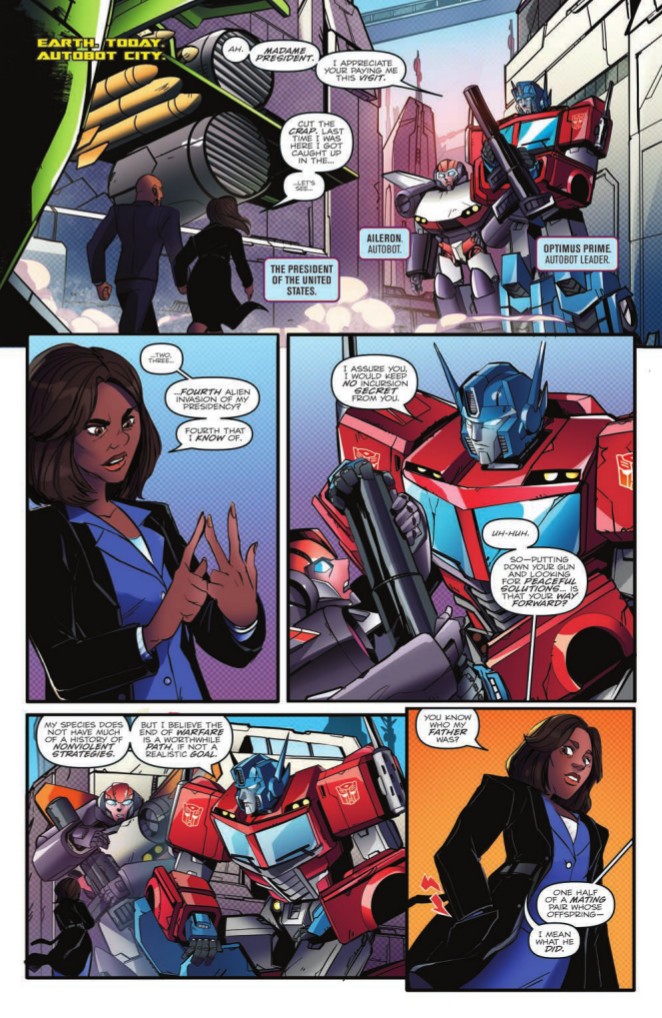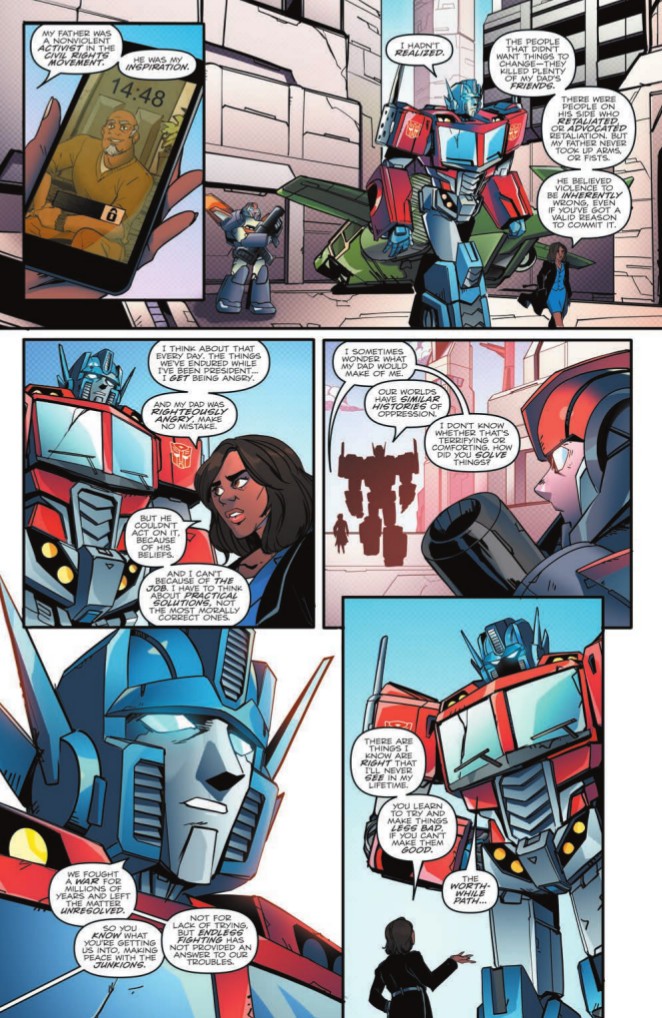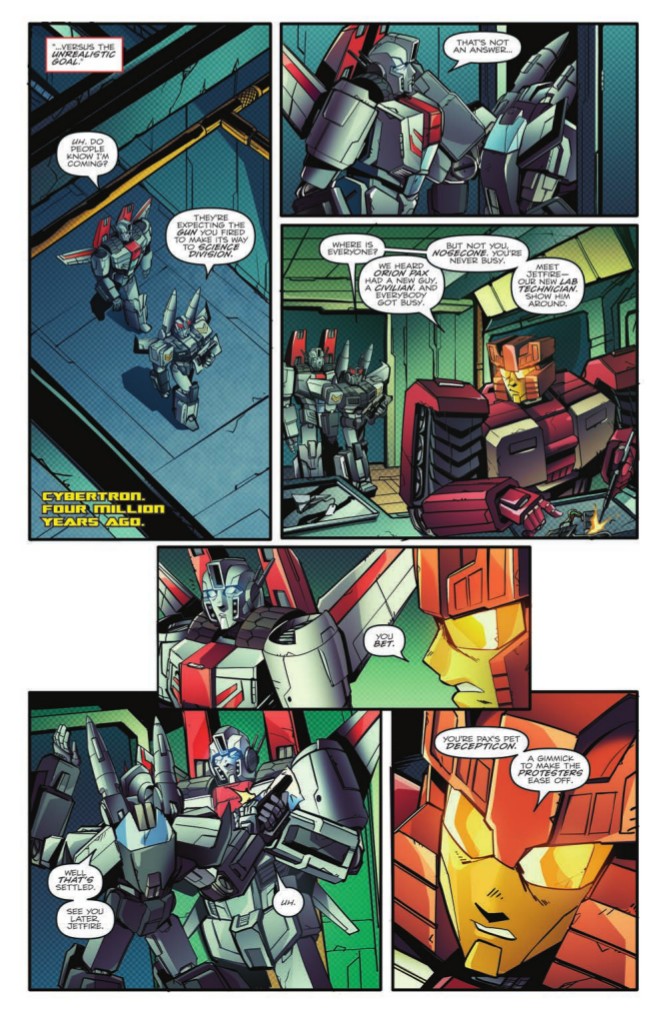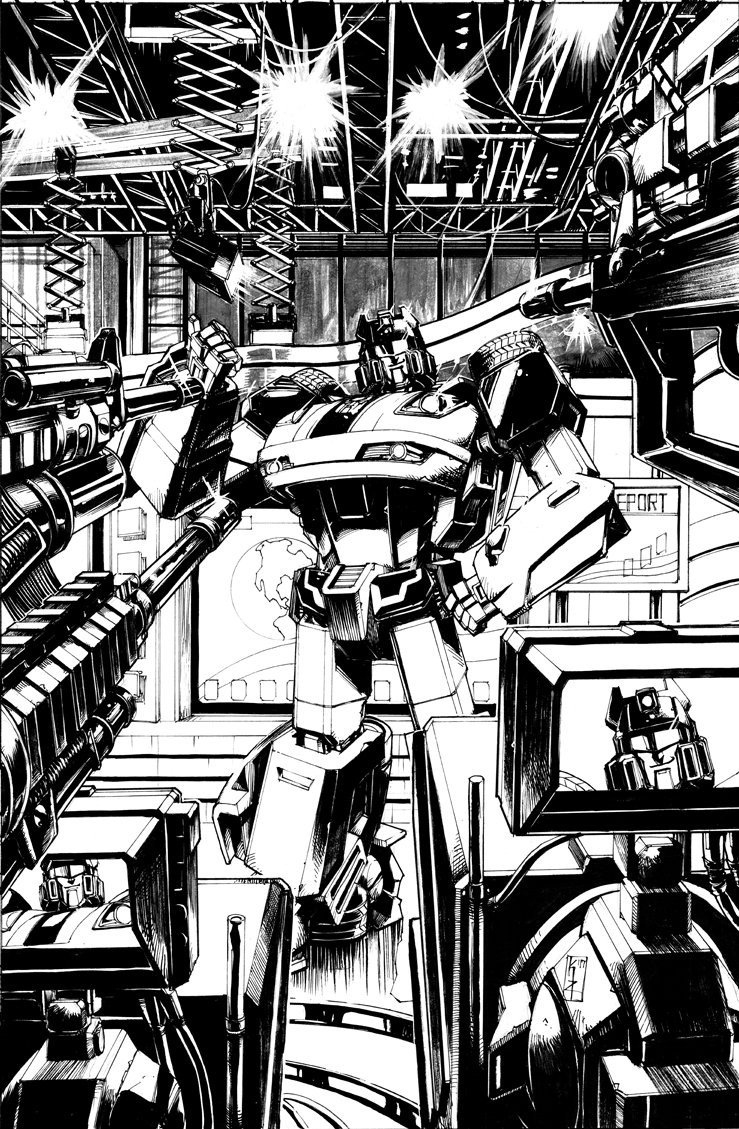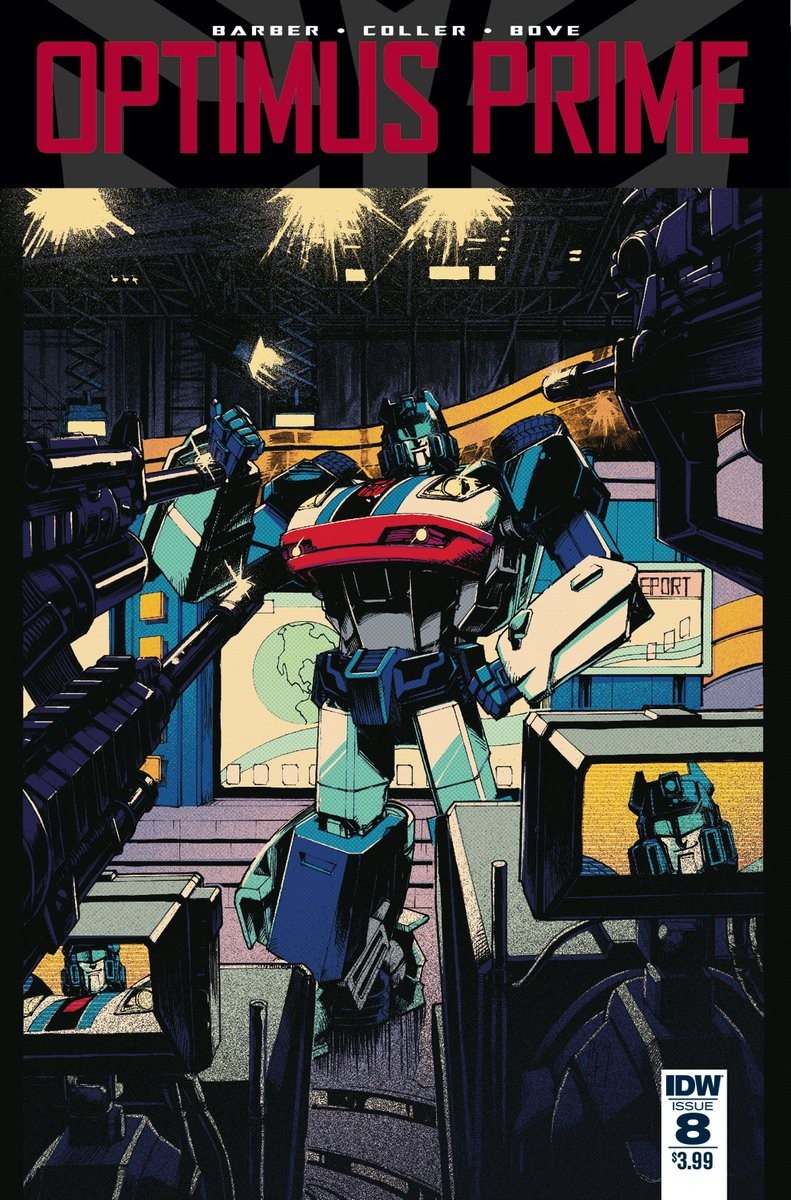The Heart in the Machine
(Spoiler free-ish)
Synopsis With the Junkion invasion resolved peacefully, Optimus Prime takes a moment to plan the Autobot's next move on Earth.
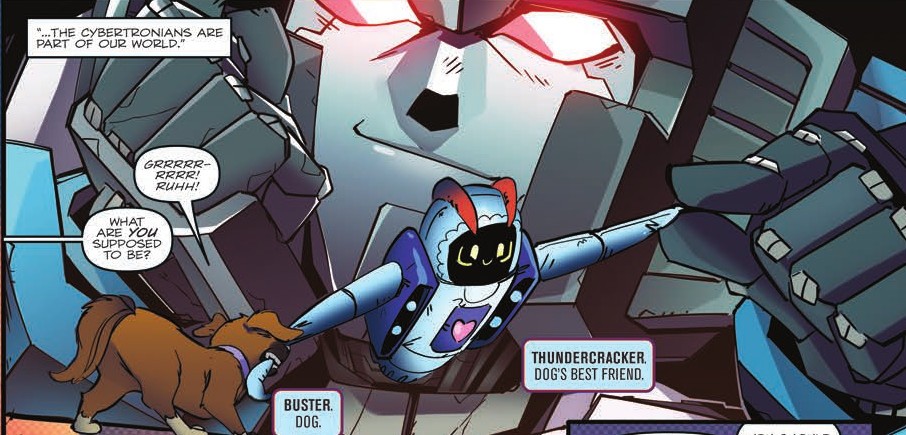 Look at this panel and smile
Look at this panel and smileAs we saw last month, the first arc of the new ongoing series focusing on Optimus Prime - but really on Earth after Optimus annexed it to the Council of Worlds (yay space neocolonialism) - and the rebuilding phase is starting. Quite literally. But is everything as it seems in the newtopia of Little Cybertron?
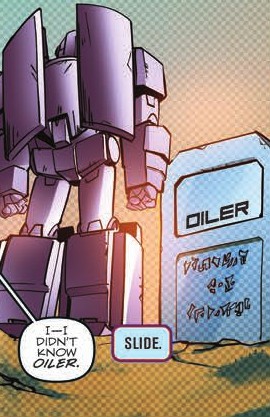 ..then this one, and weep
..then this one, and weepThe usual John Barber device of captions to help the narration along is foregone here, in favour of the established parallels with flashbacks, and actual breathing space in character interactions, starting with Optimus and the President of the US, and Jazz's role in the next issue (but also the past). A change of pace, for sure, and a welcome one given the themes addressed in the book.
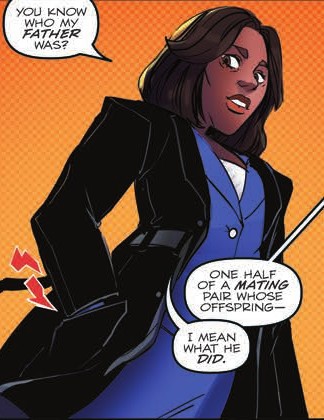 lol sex joke
lol sex jokeNot only do we have parallels drawn between violence, guns and ostracism (in particular between Jetfire of the past and Optimus of the present), there are some less than subtle political commentaries on discrimination based on appearance or 'build', if you will - without ever getting preachy or entirely overt. More on this below.
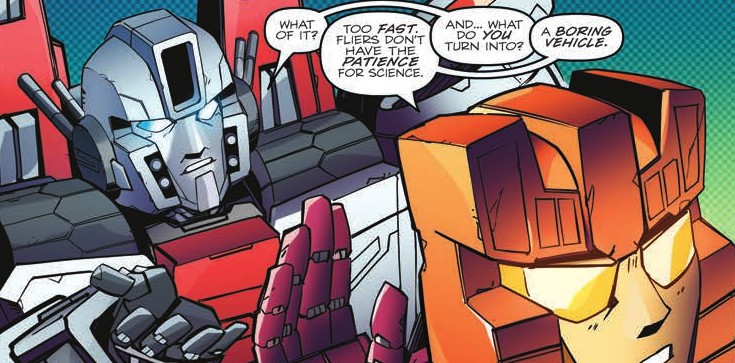 Functionism. Casually
Functionism. CasuallyIn terms of plot advancement, then, there is A LOT happening in the book too. A very nice balance achieved in using the characters and their actions/words to seed where the story might be going from here, with Arcee, the colonist recruits, Jazz - and most of all, of course, Pyra Magna.
ArtTaking the reins from Zama, Priscilla Tramontano shines as the artist on the book - and working on both lineart and colouring for the issue - especially in one specific case I want to address: the faceplateless Optimus. That, right there, is part of visual storytelling: Optimus at his non-warring, non-fighting, but coming face-to-face with his realisation from last issue, and as he speaks to humanity on a more common level.
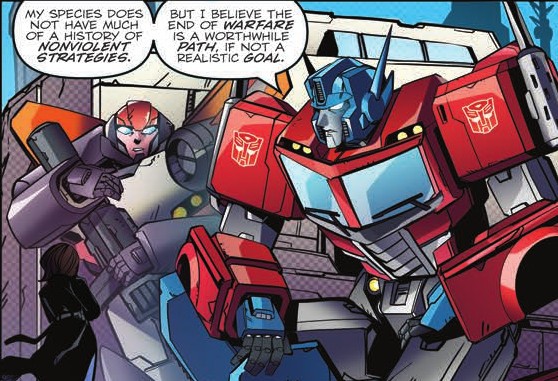 How accessible does he look, right here?
How accessible does he look, right here?Not the sole point to highlight about the art, of course, but one I wanted to reiterate nonetheless. Colour-wise, I found it fascinating how Tramontano was able to mimic Burcham's take so far, with the grainier texture, and add some extra light for the superficially lighter tone of the book, like a vibrant comma in the long sentence that is the ongoing series.
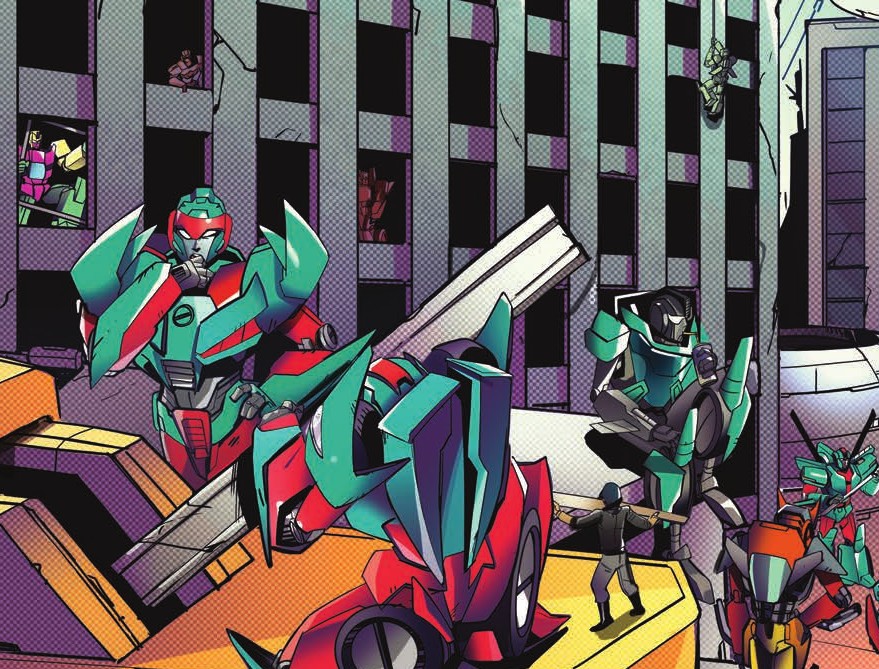 (though Rust Dust is missing a little red)
(though Rust Dust is missing a little red)The lack of that many captions, though still some snarky name tags float around, means that we don't have as much from the hands of Tom B. Long - though there is a very good KRUNG if you wait for it. As for covers, we've seen all of them previously, bar Tramontano's own (in the thumbnail), featuring the Junkion-Optimus monument by Casey Coller and JP Bove, and its parody by Andrew Griffith and Josh Perez, plus of course the regular cover by Zama and Burcham. All can be seen in our database listing
here!
ThoughtsSpoilerish aheadThere is a lot more that can be said about this issue, for which I have very little time and space - but some of my thoughts on it are bounced off the Twincast in episode 175 of the podcast, due soon. In the meantime, I wanted to point out that of the many interactions we see in the book, I was glad to have something dealing with Arcee, and Aileron's role is still one that I'm intrigued about.
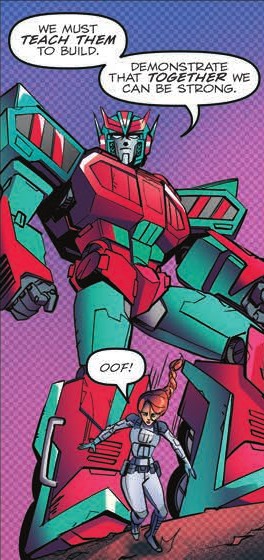 Am I the only one hearing ominous-ness here..?
Am I the only one hearing ominous-ness here..?Pyra Magna is still, however, the biggest presence outside of the titular character, even by just looking at the covers. There is a lot of talk not only about politics but also about faith (again, more thoughts in the podcast episode) in how her and OP interact and confront each other, and there is a lot - a lot - more to come out of this series.










